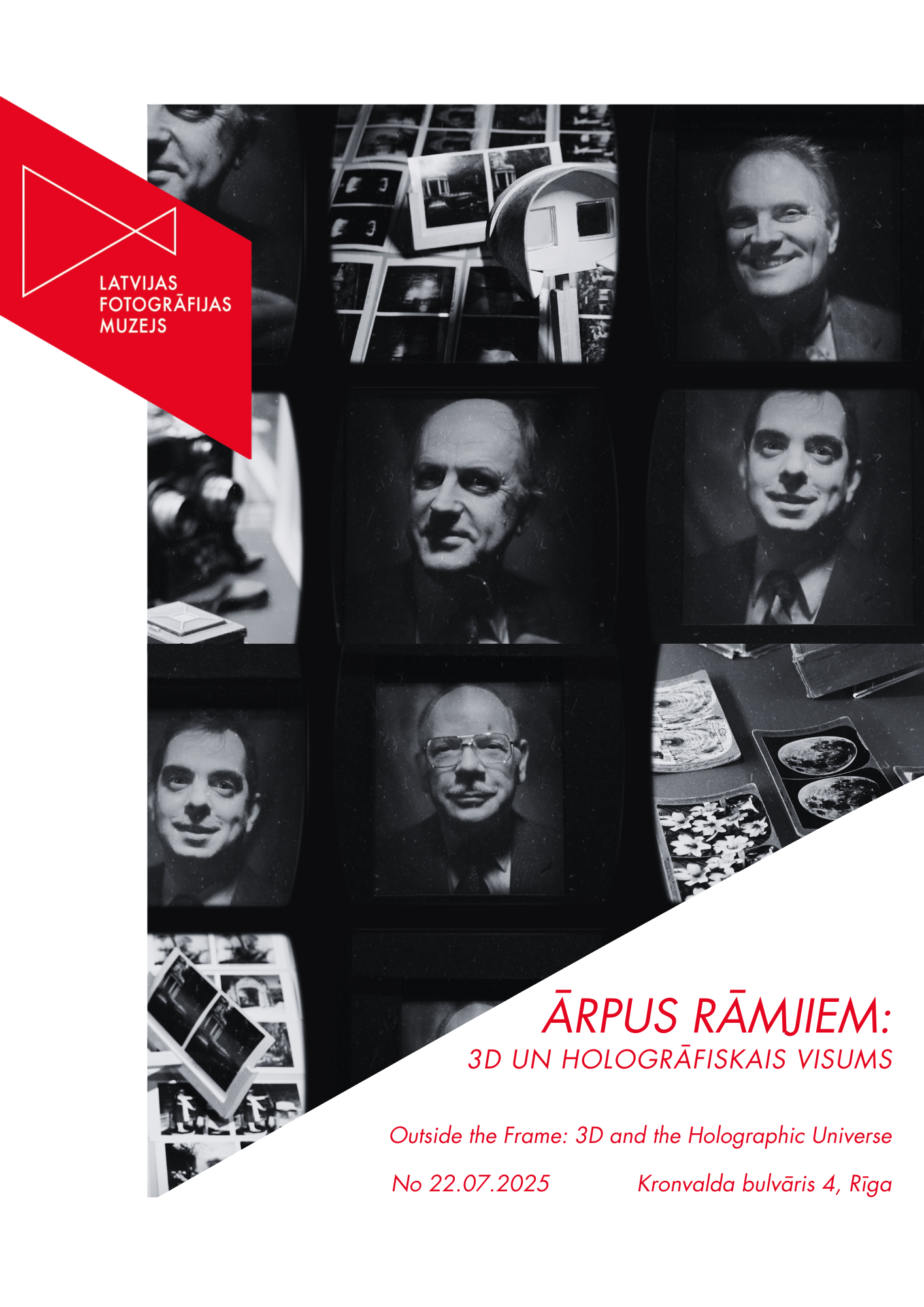Outside the Frame: 3D and the Holographic Universe
Starting 22 July, the Latvian Museum of Photography will host the exhibition “Outside the Frame: 3D and the Holographic Universe”, which explores the search for the third dimension in images. The exhibition represents an active research process, with a special focus on Latvian scientist Juris Upatnieks, who, together with his American colleague Emmet Leith, presented the world’s first three-dimensional holograms in the 1960s. Visitors are invited to reflect and co-create new knowledge about spatial representation in images, holography, and other topics at the intersection of photography and science.
People has long been fascinated by the possibility of not only capturing space-time in a flat image – a photograph – but also of adding a third dimension to it. The Museum’s collection includes more than 1,000 stereographs by Pēteris Šmits (1882-1973), some of which will be on display. Holograms, also represented in the collection, offer a fundamentally different approach to three-dimensional photography.
In the 1960s, two scientists – Juris Upatnieks (b. 1936), who had emigrated from Latvia, and American physicist Emmett Leith – presented their groundbreaking discovery: the first three-dimensional hologram. Around the same time, on the other side of the Iron Curtain, Russian physicist Yuri Denisyuk independently developed his own, slightly different method for producing holograms.
This event marked a major turning point not only in photography and science but also from a philosophical perspective. Holograms became a central metaphor in the holographic paradigm of thought. American physicist and philosopher David Bohm developed a holistic worldview, comparing holograms to the structure of the universe, while Austrian neuropsychologist Karl Pribram applied the holographic principle to the way memories are stored in the brain.
Throughout the exhibition, researchers and other interested visitors are invited to explore various sources of information, try out the stereoscope, and collaborate in identifying the people depicted in the holograms. In the autumn season, the exhibition will be complemented by a programme of lectures, excursions, and other public events.
The exhibition is curated by the museum’s historian Džūlija Rodenkirhena and collection manager Daiga Jamonte, with artistic design by Antra Augustinoviča.
It is open daily from 10:00 to 17:00 at 4 Kronvalda Boulevard.





